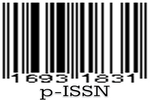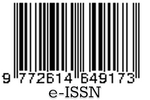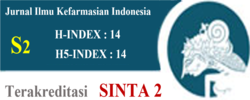Optimizing plant exosome isolation: a systematic review of PEG-based precipitation, ultracentrifugation, and hybrid methodologies for biomedical applications
Abstract
Plant-derived exosome-like nanoparticles (PDELNs) represent a promising frontier in nanomedicine, offering natural alternatives to synthetic drug delivery systems. These membrane-bound vesicles, typically 30-150 nm in size, contain bioactive compounds and demonstrate potential for cross-kingdom communication with mammalian cells. This objective study is to evaluate PEG-based and ultracentrifugation methods, benchmark hybrid approaches, compare emerging alternatives, and assess their impact on biomedical applications. A systematic analysis of diverse studies employing comparative yield, purity, bioactivity, scalability, and complexity metrics was conducted. A systematic search of 3 databases SciSpace Deep Search; Google Scholar; MEDLINE (2016-2024) following PRISMA guidelines, 52 studies met the inclusion criteria with combined terms : ``plant exosome'' AND (``PEG precipitation'' OR ``polyethylene glycol'' OR ``ultracentrifugation'' OR ``hybrid methods'') AND ``biomedical applications''. Findings indicate that PEG-based precipitation offers higher or comparable yields with greater scalability and cost-effectiveness but lower purity due to protein co-precipitation; ultracentrifugation yields purer exosomes with preserved bioactivity yet is resource-intensive and less scalable; hybrid methods combining PEG precipitation with ultracentrifugation or size-exclusion chromatography balance yield and purity while increasing procedural complexity. Emerging techniques, such as immunoaffinity capture, enhance specificity but face limitations in plant systems. Overall, optimized hybrid protocols improve isolation quality and bioactivity retention, supporting translational potential. These insights underscore the need for standardized, scalable isolation strategies tailored to plant exosomes to advance their clinical and biomedical applications.
References
[2] Lian, M. Q., Chng, W. H., Liang, J., Yeo, H. Q., Lee, C. K., Belaid, M., Tollemeto, M., Wacker, M. G., Czarny, B., & Pastorin, G. (2022). Plant‐derived extracellular vesicles: recent advancements and current challenges on their use for biomedical applications. Journal of extracellular vesicles, 11. https://doi.org/10.1002/jev2.12283
[3] Mu, N., Li, J., Zeng, L., You, J., Li, R., Qin, A., Liu, X., Yan, F., & Zhou, Z. (2023). Plant-derived exosome-like nanovesicles: current progress and prospects. International Journal of Nanomedicine. https://doi.org/10.2147/ijn.s420748
[4] Feng, H., Yue, Y., Zhang, Y. P., Liang, J., Liu, L., Wang, Q., Feng, Q., & Zhao, H. (2024). Plant-derived exosome-like nanoparticles: emerging nanosystems for enhanced tissue engineering. International Journal of Nanomedicine, 19, 1189-1204. https://doi.org/10.2147/ijn.s448905
[5] Rehman, T. T., Li, H., Martuscelli, M., Aiello, F., Esposito, L., Ashraf, K., Mastrocola, D., Guo, M., & Mohsin, A. (2024). Plant-derived exosomes: Nano-inducers of cross kingdom regulations. https://doi.org/10.20944/preprints202407.2048.v1
[6] Kürtösi, B., Kazsoki, A., & Zelkó, R. (2024). A systematic review on plant-derived extracellular vesicles as drug delivery systems. International Journal of Molecular Sciences, 25 (14), 7559-7559. https://doi.org/10.3390/ijms25147559
[7] Madhan, S., Dhar, R., & Devi, A. (2024). Plant-derived exosomes: A green approach for cancer drug delivery. Journal of Materials Chemistry B. https://doi.org/10.1039/d3tb02752j
[8] Jin, Z., Na, J., Lin, X., Jiao, R., Liu, X., & Huang, Y. (2024). Plant-derived exosome-like nanovesicles: a novel nanotool for disease therapy. Heliyon. https://doi.org/10.1016/j.heliyon.2024.e30630
[9] Huang, Y., Wang, S., Cai, Q., & Jin, H. (2021). Methodological guidelines for isolation and purification of plant extracellular vesicles. bioRxiv. https://doi.org/10.1101/2021.09.01.458648
[10] Kalarikkal, S. P., Kalarikkal, S. P., Prasad, D., Kasiappan, R., Chaudhari, S. R., Sundaram, G. M., & Sundaram, G. M. (2020). A cost-effective polyethylene glycol-based method for the isolation of functional edible nanoparticles from ginger rhizomes. Scientific Reports, 10 (1), 4456-4456. https://doi.org/10.1038/S41598-020-61358-8
[11] Ludwig, A., Ludwig, A., Miroschedji, K. D., Doeppner, T. R., Doeppner, T. R., Börger, V., Ruesing, J., Rebmann, V., Durst, S., Jansen, S., Bremer, M., Behrmann, E., Behrmann, E., Behrmann, E., Singer, B. B., Jastrow, H., Kuhlmann, J. D., Kuhlmann, J. D., Magraoui, F. E., ... Giebel, B. (2018). Precipitation with polyethylene glycol followed by washing
and pelleting by ultracentrifugation enriches extracellular vesicles from tissue culture supernatants in small and
large scales.. Journal of extracellular vesicles, 7 (1), 1528109-1528109. https://doi.org/10.1080/20013078.2018.1528109
[12] Ryu, K. J., Ryu, K. J., Lee, J. Y., Park, C., Park, C., Cho, D., & Kim, S. J. (2020). Isolation of small extracellular vesicles from human serum using a combination of ultracentrifugation with polymer-based precipitation. Korean Journal of Laboratory Medicine, 40 (3), 253-258. https://doi.org/10.3343/ALM.2020.40.3.253
[13] Zhen, K., Wei, X., Zhi, Z., Zhang, S., Cui, L., Liu, Y., Chen, X., Yao, J., & Zhang, H. (2022). Comparison of different isolation methods for plasma-derived extracellular vesicles in patients with hyperlipidemia. Reproductive and developmental Biology, 12 (11), 1942-1942. https://doi.org/10.3390/life12111942
[14] Williams, S., Fernández-Rhodes, M., Law, A., Peacock, B., Lewis, M. P., & Davies, O. G. (2023). Comparison of extracellular vesicle isolation processes for therapeutic applications. Journal of Tissue Engineering, 14, 204173142311746-204173142311746. https://doi.org/10.1177/20417314231174609
[15] Bai, C., liu, J., Zhang, X., Li, Y., Qin, Q., Song, H., Yuan, C., & Huang, Z. (2024). Research status and challenges of plant-derived exosome-like nanoparticles.. https://doi.org/10.1016/j.biopha.2024.116543
[16] Chen, Y., & Cai, Q. (2023). Plant exosome-like nanovesicles and their role in the innovative delivery of rna
therapeutics. Advances in Cardiovascular Diseases, 11 (7), 1806-1806. https://doi.org/10.3390/biomedicines11071806
[17] Chunping, C., Hongyan, X., Shuaichen, L., Yuxin, T., & Yuchen, W. (2004). Research progress of plant exosome-like nanoparticles on characteristics,components and functions. https://doi.org/10.13652/j.spjx.1003.5788.2023.80423
[18] Stanly, C., Fiume, I., Capasso, G., & Pocsfalvi, G. (2016). Isolation of exosome-like vesicles from plants by ultracentrifugation on sucrose/deuterium oxide (d2o) density cushions. Methods of Molecular Biology, 1459, 259-269. https://doi.org/10.1007/978-1-4939-3804-9_18
[19] Coughlan, C. M., Bruce, K. D., Burgy, O., Boyd, T., Michel, C. R., Garcia-Perez, J. E., Adame, V., Anton, P., Bettcher, B. M., Chial, H. J., Königshoff, M., Hsieh, E. W. Y., Graner, M. W., & Potter, H. (2020). Exosome isolation by ultracentrifugation and precipitation and techniques for downstream analyses. Current protocols in pharmacology, 88 (1), . https://doi.org/10.1002/CPCB.110
[20] Tiwari, S., Kumar, V., Randhawa, S., & Verma, S. K. (2021). Preparation and characterization of extracellular vesicles. American Journal of Reproductive Immunology, 85 (2), . https://doi.org/10.1111/AJI.13367
[21] Yu, J., Huang, D., Liu, H., & Cai, H. (2024). Optimizing conditions of polyethylene glycol precipitation for exosomes isolation from mscs culture media for regenerative treatment. Biotechnology Journal, 19 (9). https://doi.org/10.1002/biot.202400374
[22] Yi, Q., Xu, Z., Thakur, A., Zhang, K., Liang, Q., Liu, Y., & Yan, Y. (2023). Current understanding of plant-derived exosome-like nanoparticles in regulating the inflammatory response and immune system microenvironment. Pharmacological Research, 190, 106733. https://doi.org/10.1016/j.phrs.2023.106733
[23] Sarasati, A., Syahruddin, M. H., Nuryanti, A., & Ana, I. D. (2023). Plant-derived exosome-like nanoparticles for biomedical applications and regenerative therapy. Biomedicines, 11(4), 1053. https://www.mdpi.com/2227-9059/11/4/1053
[24] Liu, Y., Xiao, S., Wang, D., Qin, C., Wei, H., & Li, D. (2024). A review on separation and application of plant-derived exosome-like nanoparticles. Journal of Separation Science, 47 (8), e2300669-e2300669. https://doi.org/10.1002/jssc.202300669
[25] Sah, A. K., Arora, S., Sahu, R. C., Kumar, D., & Agrawal, A. K. (2025). Plant-based exosome-like extracellular vesicles as encapsulation vehicles for enhanced bioavailability and breast cancer therapy: recent advances and challenges. Medical Oncology, 42(1), 1-20. https://doi.org/10.1007/s12032-025-02720-6
[26] Aziz, M. A., Seo, B., Hussaini, H. M., Hibma, M., & Rich, A. M. (2022). Comparing two methods for the isolation of exosomes. Journal of Nucleic Acids, 2022, 1-6. https://doi.org/10.1155/2022/8648373
[27] Chandrasekera, D., Shah, R. R., Hout, I. V., Bunton, R. W., Parry, D., Davis, P., & Katare, R. (2023). Combination of precipitation and size exclusion chromatography as an effective method for exosome like extracellular vesicle isolation from pericardial fluids. Nanotheranostics, 7 (4), 345-352. https://doi.org/10.7150/ntno.82939
[28] Chang, M., Chang, Y., Chao, P. Y., & Yu, Q. (2018). Exosome purification based on peg-coated fe3o4 nanoparticles. PLOS ONE, 13 (6). https://doi.org/10.1371/JOURNAL.PONE.0199438
[29] Deregibus, M. C., Figliolini, F., D'Antico, S., Manzini, P., Pasquino, C., Lena, M. D., Tetta, C., Brizzi, M. F., &
Camussi, G. (2016). Charge-based precipitation of extracellular vesicles. International Journal of Molecular Medicine, 38 (5), 1359-1366. https://doi.org/10.3892/IJMM.2016.2759
[30] Dutta, S., Ghosh, S., Rahaman, M., & Chowdhury, S. R. (2024). Plant-derived exosomes: Pioneering breakthroughs in therapeutics, targeted drug delivery, and regenerative medicine. Pharmaceutical nanotechnology, 12. https://doi.org/10.2174/0122117385305245240424093014
[31] Eldahshoury, M. K., Κατσαρού, Κ., Farley, J. T., Kalantidis, K., & Lousa, C. D. M. (2024). Isolation of small extracellular vesicles (sevs) from the apoplastic wash fluid of nicotiana benthamiana leaves. Current protocols, 4 (11). https://doi.org/10.1002/cpz1.70026
[32] Fu, W., Zhang, P., Wang, W., Du, M., Ni, R., & Sun, Y. (2024). Frontiers of plant-derived exosomes from research methods to pharmaceutical applications in plant-based therapeutics. Current Drug Delivery, 21. https://doi.org/10.2174/0115672018305953240606063911
[33] Gharavi, A. T., Niknejad, A., Irian, S., Rahimi, A., & Salimi, R. (2024). Polyethylene glycol -mediated exosome isolation: A method for exosomal rna analysis. Iranian biomedical journal. https://doi.org/10.61186/ibj.4129
[34] Guerreiro, E., Vestad, B., Steffensen, L. A., Aass, H. C. D., Saeed, M., Øvstebø, R., Costea, D. E., Costea, D. E., Galtung, H. K., Søland, T., & Søland, T. (2018). Efficient extracellular vesicle isolation by combining cell media modifications, ultrafiltration, and size-exclusion chromatography. PLOS ONE, 13 (9).
https://doi.org/10.1371/JOURNAL.PONE.0204276
[35] Hurwitz, S. N., & Meckes, D. G. (2017). An adaptable polyethylene glycol-based workflow for proteomic analysis of extracellular vesicles. Methods of Molecular Biology, 1660, 303-317. https://doi.org/10.1007/978-1-4939-7253-1_25
[36] Kim, J., Lee, Y., Wang, J. S., Kim, Y., & Kwon, I. (2022). Isolation and characterization of ginseng-derived exosome-like nanoparticles with sucrose cushioning followed by ultracentrifugation. SN applied sciences, 4 (2). https://doi.org/10.1007/s42452-022-04943-y
[37] Kocholatá, M., Průšová, M., Malinská, H. A., Malý, J., & Janoušková, O. (2022). Comparison of two isolation methods of tobacco-derived extracellular vesicles, their characterization and uptake by plant and rat cells. Dental science reports, 12 (1). https://doi.org/10.1038/s41598-022-23961-9
[38] Koh, Y. Q., Almughlliq, F. B., Vaswani, K., Peiris, H. N., & Mitchell, M. D. (2018). Exosome enrichment by ultracentrifugation and size exclusion chromatography. Frontiers in Bioscience, 23 (3), 865-874. https://doi.org/10.2741/4621
[39] Li, Y., Wang, Y., Zhao, H., Pan, Q., & Chen, G. (2024). Engineering strategies of plant-derived exosome-like nanovesicles: Current knowledge and future perspectives. International Journal of Nanomedicine, Volume 19 12793-12815. https://doi.org/10.2147/ijn.s496664
[40] Lo, K., Wang, M., Ho, C., & Pan, M. (2024). Plant-derived extracellular vesicles: A new revolutionization of modern healthy diets and biomedical applications. Journal of Agricultural and Food Chemistry. https://doi.org/10.1021/acs.jafc.3c06867
[41] Mammadova, R., Fiume, I., Bokka, R., Kralj-Iglič, V., Božič, D., Kisovec, M., Podobnik, M., Zavec, A. B., Hočevar, M., Gellén, G., Schlosser, G., & Pocsfalvi, G. (2021). Identification of tomato infecting viruses that co-isolate with nanovesicles using a combined proteomics and electron-microscopic approach. Nanomaterials, 11 (8). https://doi.org/10.3390/NANO11081922
[42] Martins, T. S., Catita, J. A. M., Rosa, I. M., Silva, O. A. B. D. C. E., & Henriques, A. G. (2018). Exosome isolation from distinct biofluids using precipitation and column-based approaches.. PLOS ONE, 13 (6). https://doi.org/10.1371/JOURNAL.PONE.0198820
[43] Rahmatinejad, F., Kharat, Z., Jalili, H., Renani, M. K., & Mobasheri, H. (2024). Comparison of morphology, protein concentration, and size distribution of bone marrow and wharton's jelly-derived mesenchymal stem cells exosomes isolated by ultracentrifugation and polymer-based precipitation techniques. Tissue & Cell, 88 102427-102427. https://doi.org/10.1016/j.tice.2024.102427
[44] Ratnadewi, D., Widjaja, C. H., Barlian, A., Amsar, R. M., Ana, I. D., Hidajah, A. C., Notobroto, H. B., & Wungu, T. D. K. (2022). Isolation of native plant-derived exosome-like nanoparticles and their uptake by human cells. Hayati Journal of Biosciences, 30 (1), 182-192. https://doi.org/10.4308/hjb.30.1.182-192
[45] Robinson, S., Samuels, M., Jones, W. E., Stewart, N. A., Eravci, M., Mazarakis, N. K., Gilbert, D. C., Critchley, G., & Giamas, G. (2024). Confirming size-exclusion chromatography as a clinically relevant extracellular vesicles separation method from 1ml plasma through a comprehensive comparison of methods. Deleted Journal, 1 (1). https://doi.org/10.1186/s44330-024-00007-2
[46] Sha, A., Luo, Y., Xiao, W., He, J., Chen, X., Xiong, Z., Peng, L., Zou, L., Liu, B., & Li, Q. (2024). Plant-derived exosome-like nanoparticles: A comprehensive overview of their composition, biogenesis, isolation, and biological applications. International Journal of Molecular Sciences, 25 (22), 12092-12092. https://doi.org/10.3390/ijms252212092
[47] Suresh, A. P., Kalarikkal, S. P., Pullareddy, B., Sundaram, G. M., & Sundaram, G. M. (2021). Low Ph-based method to increase the yield of plant-derived nanoparticles from fresh ginger rhizomes. https://doi.org/10.1021/ACSOMEGA.1C02162

This work is licensed under a Creative Commons Attribution-NonCommercial-ShareAlike 4.0 International License.
Licencing
All articles in Jurnal Ilmu Kefarmasian Indonesia are an open-access article, distributed under the terms of the Creative Commons Attribution-NonCommercial-ShareAlike 4.0 International License which permits unrestricted non-commercial used, distribution and reproduction in any medium.
This licence applies to Author(s) and Public Reader means that the users mays :
- SHARE:
copy and redistribute the article in any medium or format - ADAPT:
remix, transform, and build upon the article (eg.: to produce a new research work and, possibly, a new publication) - ALIKE:
If you remix, transform, or build upon the article, you must distribute your contributions under the same license as the original. - NO ADDITIONAL RESTRICTIONS:
You may not apply legal terms or technological measures that legally restrict others from doing anything the license permits.
It does however mean that when you use it you must:
- ATTRIBUTION: You must give appropriate credit to both the Author(s) and the journal, provide a link to the license, and indicate if changes were made. You may do so in any reasonable manner, but not in any way that suggests the licensor endorses you or your use.
You may not:
- NONCOMMERCIAL: You may not use the article for commercial purposes.
This work is licensed under a Creative Commons Attribution-NonCommercial-ShareAlike 4.0 International License.




 Tools
Tools





















